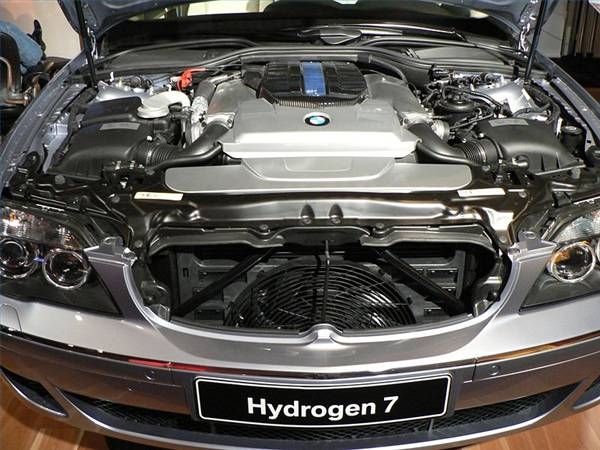
As the world's resources are being depleted and pollution is increasing, new, cleaner and more efficient sources of energy are increasingly sought. Automobiles are a major concern because of pollutants in their exhaust and rising costs of oil, so alternative fuel sources are being considered. One such alternative being considered is hydrogen. Hydrogen powered cars are just like gasoline cars on the outside and drive the same but the engine is powered by hydrogen gas fuel cell instead of gasoline. This fuel cell produces electricity through a direct electrochemical reaction in which hydrogen (H2) and oxygen (O2) from the air are combined and convert it into electricity, which is a clean alternative to gasoline. The only emission is water vapor, so the carbon dioxide emissions of gasoline powered cars are no longer a factor contributing to pollution. Hydrogen is an easy to find resource that greatly reduces our dependence on foreign and domestic oil. The efficiency of hydrogen powered cars is much greater than gasoline powered cars, partly because its drive system requires no heat or air expansion to operate the engines pistons and crankshaft, which means less energy loss.
The heart of a hydrogen powered car lies within its fuel cell technology, which is what converts hydrogen into electricity to actually drive the vehicle. Hydrogen gas flows from the tank into the anode (inflow terminal) of the fuel cell, where, with the aid of a catalyst, hydrogen molecules are split into its component electrons and protons. The electrons then flow through a circuit to produce electricity, which is directed to the electric drive motor of the vehicle, and the protons go through a polymer electrolyte membrane. Oxygen from the air than enters to the cathode (outflow terminal) at the other end of the cell to combined with the electrons and protons to form water, which is released as heat and water vapor. An actual fuel cell is made of a thin membrane between two electrode layers, which, in turn, are between two separator layers. Hundreds of these cells are layered together and connected in series, like batteries. Although there are hundreds of these cells, when hydrogen fuel cell is discussed, it usually refers to the series of cells as a whole.
Hydrogen powered cars are being designed by dozens of different automobile manufacturers and each designs their cars differently. At the current level of hydrogen technology, the basic process is about the same in most vehicles. A hydrogen tank in the back of the car stores the hydrogen gas, not unlike that of a gasoline tank. The hydrogen mixes with oxygen in the air as it flows into the fuel cell stack, which uses an electrochemical process to generate electricity. Some of this electricity goes to the motor and the rest is used to keep a battery, such as a lithium-ion battery, charged. The battery is usually used as a backup energy source. The electricity flows into the power drive unit, which governs the flow of electricity into the electric drive motor. The motor propels the vehicle like a regular electric motor does. Various safety systems are employed by most hydrogen vehicles, including a ventilation system and an automatic shut off in case of a hydrogen leak, a collision system that automatically shuts off the flow of hydrogen and electricity, and a refueling safety system to prevent reverse airflow of hydrogen, prevent contamination by other gases, and make sure that the hydrogen is stored at compatible pressure levels within the tank.